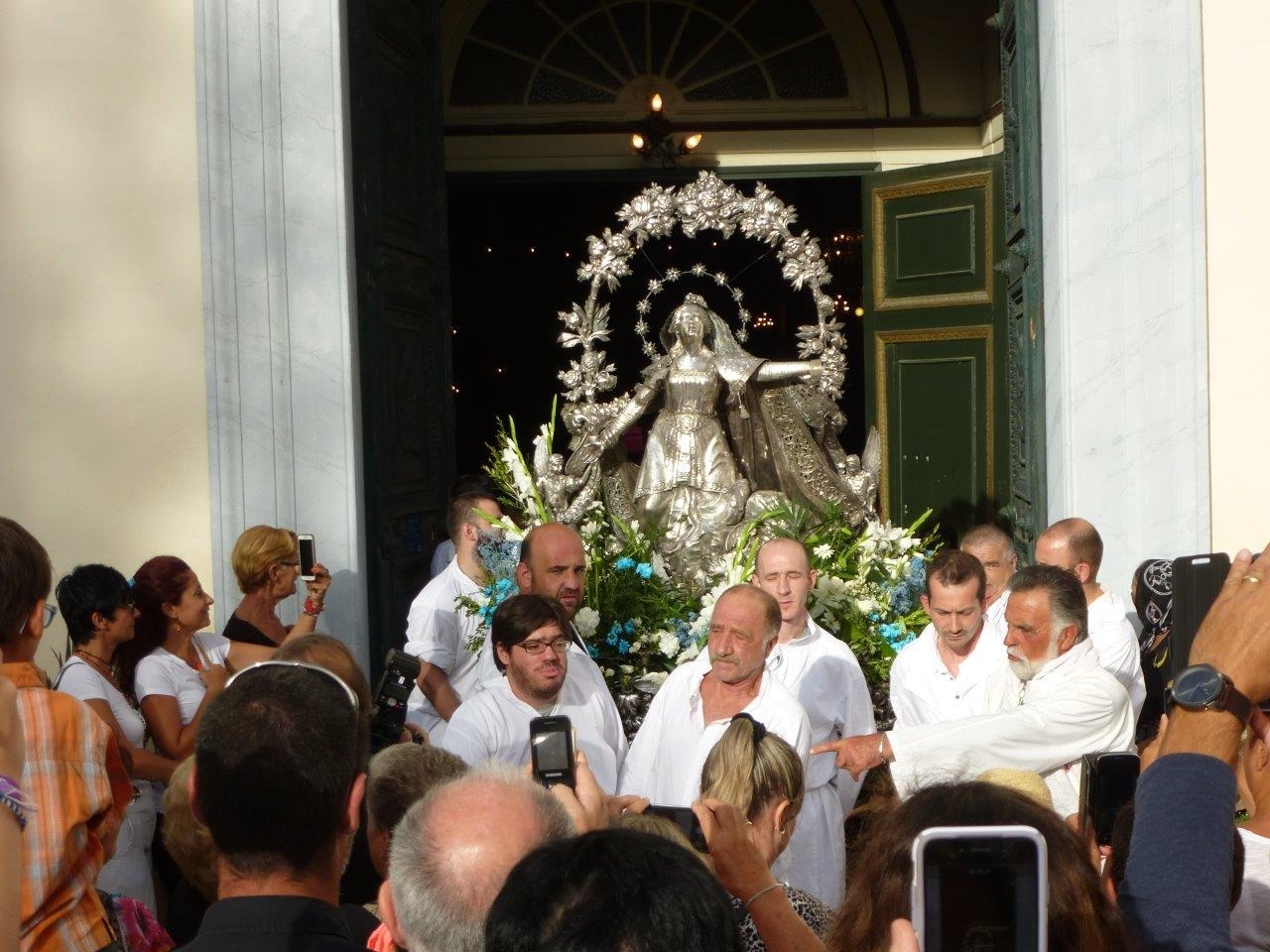Find out what Ferragosto is and how it is celebrated in Sicily and Corsica.
Old Port of Bastia, Corsica, with the bastion visible on the hill on the left. - Photo by C. Sturm.
Those of you who have traveled to Italy mid-August and found most businesses closed for a good week if not the rest of the month: You know that during Ferragosto, the bulk of Italians se ne vanno al mare, leave their hometowns to toast their skins on a small part of the 9200+ km (5700+ miles) of Italian coastline.
In fact, if you don't plan on shopping, Rome is a pleasure to visit during that time. When my sister and I were there in 2015, we allowed extra time to get to Termini train station by bus. It turned out that on that Monday morning at rush hour, we shared bus 63 with a dozen people and zoomed to the station in a record 20 minutes. A guide once told me she loved Rome in August because there was no road traffic, no grumpy Romans, and many tourists booking her tours.
Ferragosto:
According to Richard Overy, author of "A History of War in 100 Battles", the Feriae Augusti festival was introduced by Gaius Octavius "Augustus" after his victory over Mark Anthony at the Battle of Actium in 31 BC. It actually was one of numerous festivals celebrated in August during a resting period after a long summer of hard labor in fields, and before harvest.
Ferragosto begins on August 15 and can go to the end of the month.
The religious holiday:
The Christian Catholic feast of the Assumption of Mary falls on August 15 and coincides with Ferragosto in Italy. It is also celebrated in Corsica as my sister and I found out in person, but only as a national and religious holiday (no Roman festival references). This island was Italian before it was conquered by France in 1769. Consequently, Corsican culture and language still have a strong connection to Italian roots.
In Sicily:
Paola, Pina, Cristina
Our Sicilian friend Pina whom we met during our genealogical research in Messina shared her festive enthusiasm yesterday and described her busy preparation for the feast. Pina announced she was ai fornelli (at her stove) preparing the traditional Sicilian Ferragosto meal for her family:
The meal:
Bianconero in Pina's refrigerator - Photo by Pina Campanile
- Galletto ruspante (free-range rooster)
- Involtini di pesce spada (stuffed swordfish wraps)
- Anguria (watermelon)
- Cannoli siciliani con ricotta spolverati di mandorle tostate (Ricotta-filled cannoli, dusted with toasted almonds)
- Mattonella or schiumone di gelato alla fragola e nocciola (layered strawberry and hazelnut ice cream cake)
- Bianconero (whipped cream-filled profiteroles covered with melted chocolate! Literally, the word means "white/black".
The procession:
Pina reported that in the evening, everyone in Messina attends and participates in the Ferragosto procession where the "sacred" and the "profane" share attention. View a short video she shot of the procession. Notice the interesting hand-pulled float with choirs of angels and lots of moving parts.
I Giganti a Cavallo (Horse-riding Giants), pulled by many men, in Messina - Photo by Pina Campanile
The processional float of the Madonna dell' Assunta is pulled by tens of barefoot faithful while thousands of people follow them and pray the Hail Mary in unison. - Photo by Pina Campanile
In Corsica:
In the city of Bastia, a solid silver statue of the Virgin Mary weighing about 700 kg (1400 lbs) is housed in the cathedral and is carried by a dozen men on a one-hour loop through the city's old neighborhoods. The procession attracts faithful, tourists, and onlookers by the thousands.
There are a few stops, one of which is in front of St Joseph's church (as seen in the photos above). Priests from this parish, joined by the mayor, stand on the front steps reading a proclamation and giving blessings. The statue of St Joseph holding Jesus is set on the front landing of the church as if to greet the Virgin Mary. This short pause is quite picturesque and spiritual, until fireworks are lit up and shot right there! Smoke inhalations and debris falling on the crowd were a little worrisome... A scary moment for us cautious Americans. See a short video I shot on location.
The procession stops one more time when it reaches a point that overlooks the Tyrrhenian Sea. The statue is held facing the water to bestow blessings on fishermen and the sea, provider of life and nourishment for this island community. Eventually, the crowd heads back to the cathedral.
It was very interesting and enriching for us to partake in this Corsican tradition, also imagining our ancestors carrying on this ritual in their village a few centuries ago.











